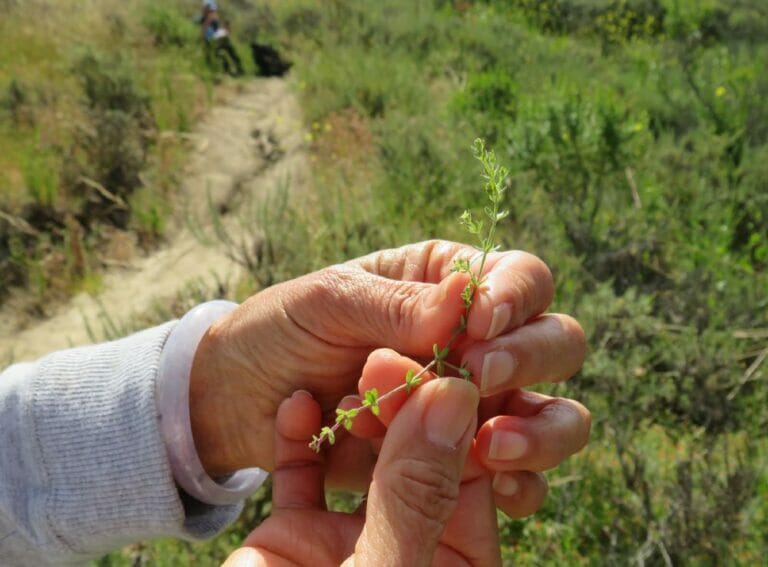The public is invited to learn about – and comment on – a new project by Santa Barbara Botanic Garden and Elings Park in a series of meetings held in August and September. The Landscape Transformation Project is a collaborative effort between the two partners and the public to transform an acre of the Park from invasive to entirely California-native plants and document the effects.
The meetings are held both in-person and via Zoom and will be led by Denise Knapp, Ph.D., the Garden’s director of conservation and research, and Scot Pipkin, their director of education.
“Native plants lay the foundation that supports all life on Earth. Through the transformation at Elings Park, we’ll be able to demonstrate, through science, the value of native plants and a healthy ecosystem,” said Dr. Knapp. “We want the public not only to hear about what we hope to achieve but to weigh in on our plans. Later, they’ll have a chance to get their hands dirty as we plant and tend to the plants.”
The first meeting is via Zoom on Wednesday, August 16 from 6:30 to 8 p.m.; it will be recorded and available for future viewings on the Garden’s website (www.SBBotanicGarden.org). Later that week, on Saturday, August 19, a meeting follows the monthly Nature Walk (held from 9 to 10 a.m.) at Elings Park from 10:30 a.m. to noon.
In September, there are two in-person meetings, one each at the Park and the Garden. On Tuesday, September 5, the meeting is held at Elings Park’s outdoor Godric Grove from 5:30 to 7 p.m. On Wednesday September 13, the final meeting is in the Santa Barbara Botanic Garden’s Blaksley Library from 5:30 to 7 p.m.
About Landscape Transformation at Elings Park
The project began with a Bioblitz on May 11 in which participants used the iNaturalist smartphone app to record birds, bugs, plants, and more that they discovered at Elings Park’s South Bluffs. Several native California plant species identified on that day will be planted in the new area, along with others, including those suggested during the public meetings.
Ongoing monthly Nature Walks led by Garden experts explore the park’s biodiversity – and one of the public meetings is scheduled following the August 19 walk (see below).
The project’s one-acre location on the South Bluffs has been selected and staff and project volunteers will clear the plot of invasive plant species, prepare the soil, then plant and monitor the native species. Earlier this spring, Garden staff began monitoring plants, birds, pollinators, and other bugs and will be following up after planting to gather additional data on the site’s vitality. Data before and after the transformation will be compared, and both will be compared to an adjacent invaded area.
Elings Park opened in 1985 as the result of a community campaign to turn the former landfill into a public park. First encompassing 90 acres, the Park expanded to 230 acres in 1994 with the purchase of an adjacent property. Currently, approximately 75% is undeveloped.
“We’ve recently made a major push to bring native plants back to the Park. Over the past two years, we’ve removed non-natives and planted over 250 California native oaks, plus thousands of native grasses and shrubs,” says Dean Noble, Elings Park executive director. “This project concentrates natives in one area, and powerfully demonstrates how this transformation can impact an entire ecosystem.”
It is a diverse landscape with recreation and natural ecosystems side by side. Nine miles of trails traverse shady oak groves and sunny, ocean-facing hillsides covered with chaparral. Youth and adults enjoy league play in softball, soccer, rugby, lacrosse, and tennis. Special areas are dedicated to BMX racing, hang gliding, paragliding, disc golf, and remote-controlled cars and airplanes. It is also a popular location for weddings and special events.


Leave a Response